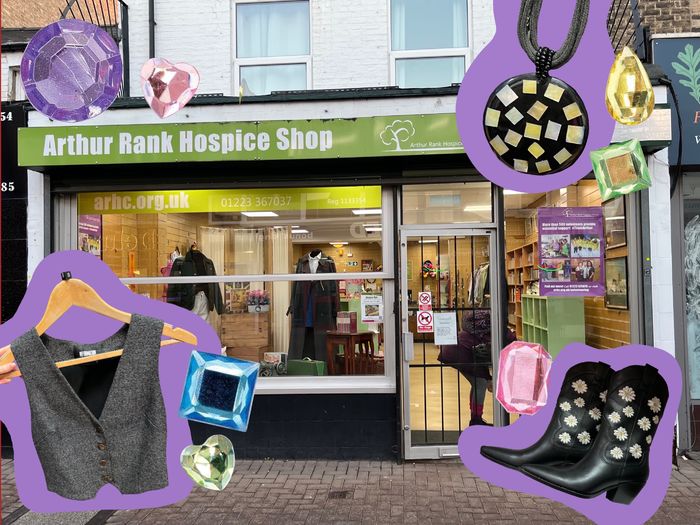Goodbye to the Grafton Centre?
As the Beehive and the Grafton Centre face major redevelopment, Nick James takes the pulse of opinion on Cambridge’s changing urban landscape

During lunch breaks at the Cambridge Scientific Instrument Company, Peter Kruger and his colleagues would get on their motorbikes and race around Cambridge. They would fly through every part of the city at 60 miles per hour (except when passing the police station, of course). That was the 1970s, Peter tells me, and those “hedonistic times” have passed. The city has changed and the route they used to race was replaced by big shopping centres. But soon, the very developments that disrupted Peter’s route could vanish as well.
While Peter and his colleagues sped around Cambridge, the city was in the midst of a bitter battle that had been brewing for decades. Cambridge Council proposed the construction of a new shopping centre to revitalise the Kite area, but the existing community ties initially proved too strong to break. The Kite Community Action Group – supported by the likes of Clive James and Michael Palin – were unrelenting in their dissent and held off the development for decades.
Nevertheless, the community could only hold out for so long, and in 1983 the Grafton Shopping Centre was open for business. In the process of the development, a number of terraced houses, shops, and an entire community were destroyed.
Despite the intense struggle to open the centre, a planning application was submitted three months ago to close the doors of the Grafton. In its place will be a life science hub that’s four storeys tall. The area will be completely redesigned with new public spaces, public artworks, restaurants, a hotel, and a refurbished cinema surrounding the labs. There will still be some shops remaining, but they will take up less than a fifth of the renovated space.
The Grafton is not the only shopping centre set to go: Railpen, the owners of the Beehive Centre (currently home to Asda and B&M), also submitted a planning application this summer to redevelop the space into 11 new buildings for life science and offices. The big stores will be replaced by 22 small shops and cafes on the ground floor, as well as a community pavilion for local groups. The car park will be completely removed, replaced by a wetland area in the hopes of encouraging people to use more sustainable modes of transport to access the area.
“Railpen estimates the Beehive redevelopment will add £650 million to Cambridge’s economy and provide over 6,000 jobs”
The fact Cambridge’s retail centres are disappearing may not be surprising given the national trends post-COVID. The Grafton’s planning application notes that the reason for the redevelopment is that the shopping centre has failed to fully recover since the pandemic; footfall is 12% lower than it was in 2019, and 13 retail units have been vacant for more than two years.
John O’Shea, the manager of the Grafton Centre said, “The centre was opened in 1983 – which was a very different world, not just for retailers. The Grafton has lost anchor stores to national closure programmes, and more people are shopping online.” However, he insists “local people still use and like the Grafton’s convenient and affordable shops, and those are the kinds of stores that the centre will focus on, rather than competing with the Grand Arcade.”
The issue of vacant retail units and decreased footfall is also true for the Beehive. Nick Vose, the communications director working on the project, told me they were redeveloping because there is now “too much big-box retail in one location.”
He added, “While the Beehive may look full, the situation is that a number of those tenants are on short-term leases, or are on less-than-market rent. I think really shopping habits are only going one way, so something needs to be done to readdress the balance.”
When I asked Nick why they were pivoting to life science, he said, “That is the growth area for Cambridge.”
He continued: “We feel that these uses and science in general, should be brought to the city as opposed to the outskirts. It’s just far more sustainable and also far more attractive to life science occupiers.”
What will these changes mean for the city? The most immediate impact will be the loss of big, affordable stores. Many of these stores have become staples for affordable student shopping, and attract vast numbers of shoppers from neighbouring villages into the city. There is also concern for the future of the charity shops on Burleigh Street, favourite haunts of Cambridge students; despite not being part of the Grafton, the redevelopment could push up nearby rents and force the charity shops out.
However, the development of life science centres within the town centre may also bring some benefits, particularly for students. I spoke to one natural science undergraduate who told me the new bioscience centre will be a very convenient place for science students to undertake internships when compared to the other centres on the outskirts of town.
The redevelopments are also likely to have a huge economic impact: Railpen estimates the Beehive redevelopment will add £650 million to Cambridge’s economy and provide over 6,000 jobs.
Despite these potential benefits, some locals remain sceptical about Cambridge’s continual pivot to life science and the growing influence of Silicon Fen on the city. Peter, who has given up his motorbike riding days and is now in retirement, is not optimistic.
After working at the Cambridge Scientific Instrument Company, he went on to run a technology start-up in Cambridge as well as write for a computer magazine during the dot-com boom and bust of the 1990s. Peter knows the industry well, and he’s fearful Cambridge may be experiencing its own dot-com bubble with life sciences.
“For now, the labs may be filled, but for how long will that last?” If demand for life sciences moves on from Cambridge, Peter is worried that the city’s growing reliance on just one industry will mean only “blank buildings” and “boxes” will remain.
John O’Shea, however argues that “The lab space will also bring thousands of people to the area every day [...] A community science classroom will bring families and school groups here too. That will bring footfall.”
Steve O’Connor, who co-runs CamCreatives, a networking group that puts on talks about art and science developments in Cambridge, is particularly concerned about the Grafton redevelopment plans, telling me they are “dull and not innovative at all.”
Through CamCreatives, Steve has met a lot of people in Cambridge’s art and science scenes, and one of the most worrying trends he’s seen is the lack of funding for the arts in Cambridge. “Although people might think Cambridge has a good art scene, it’s a really high-level one. So unless you are on the books of something like Cambridge Contemporary Art, there aren’t many exhibition opportunities.”
Steve says he knows many artists who have had to leave the city because they couldn’t find anywhere to work or exhibit. He’s concerned about Cambridge focusing too much on scientific industries and leaving the creatives behind: “Grafton was a missed opportunity to create something”.
“I can see some people would say good riddance to some of those places, but you don’t want super-clean, super-modern, super-expensive everywhere, do you?”
When I asked Steve what he would have done with the Grafton had he been running it, he spoke about his desire to have an area with both labs and studios so that artists and scientists can work together, creating more interesting, complex relationships and allowing a creative community to foster. “To me, that feels more Cambridge.”
There is concern with the Grafton development that local residents will be left behind. For people who regularly shop there and have close communal ties, it will all disappear. Steve agreed and said, “I can see some people would say good riddance to some of those places, but you don’t want super-clean, super-modern, super-expensive everywhere, do you? It doesn’t feel very homely.”
John O’Shea insists “The plans will make the Grafton a nicer place to visit, with greener streets, better cycling routes, and new public squares. The gym and cinema are staying. That’s what will bring more people to the shops – to get the community experience, cafes, and leisure offer you can’t get online.
“I really believe that this proposal will strengthen the retail offer at the Grafton for the long term so we can continue to serve the local community.”
These concerns about homeliness are also something the Beehive redevelopment team is keen to address: their planning application talks extensively about community, and they intend on implementing a variety of community initiatives including a youth centre, skate parks, communal areas, and outreach programs. Railpen is also partnering with Indie Cambridge to make sure that many of the new stores are run by local businesses.
Like in the 1970s, it is undeniable that Cambridge is moving on. Local objections may slow things down, but the tide will continue to turn away from retail centres and toward life science and office development. The big stores that have become the hallmark of affordable student shopping are going, but lots of new opportunities to revitalise communal areas and improve investment will come with the changes. The question is, will the retail replacements stand the test of time, or fall victim to the urban landscape’s next upheaval?
 Features / Should I stay or should I go? Cambridge students and alumni reflect on how their memories stay with them15 December 2025
Features / Should I stay or should I go? Cambridge students and alumni reflect on how their memories stay with them15 December 2025 News / Dons warn PM about Vet School closure16 December 2025
News / Dons warn PM about Vet School closure16 December 2025 News / Cambridge study finds students learn better with notes than AI13 December 2025
News / Cambridge study finds students learn better with notes than AI13 December 2025 News / News In Brief: Michaelmas marriages, monogamous mammals, and messaging manipulation15 December 2025
News / News In Brief: Michaelmas marriages, monogamous mammals, and messaging manipulation15 December 2025 Comment / The magic of an eight-week term15 December 2025
Comment / The magic of an eight-week term15 December 2025










